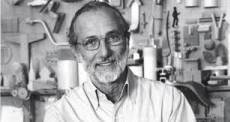
Email: emanuelealbertocirello.98@gmail.com
Total Article : 76
About Me:I am a Year 13 student which aspires to be an architect. I am interested in anything I don't yet know, and I mostly write about art, politics , Italian culture and inspirational people, although I will try to write for as many categories possible, just to test myself and get to know more things.

Renzo Piano was born in Genoa in 1937, from a family of building contractors. He studied architecture at the Polytechnic School in Milan and achieved his degree in 1964, after gaining work experience with architects based in the city. He started to work and assist his father and the family business, and during this time, he started a profound work based on experimentation, which will later be the foundations of his designs. He started to dedicate to the development of shell-like spatial figures.
The international acclaim of some of his early works was impressive, and supported by the commission for a pavilion in occasion of the “XIV Triennale” in 1966. His name started to feature in many journals and books, where some of his buildings, such as “Domus”, were given vast attention. Thanks to his international profile, he has had the opportunity of designing the Italian pavilion for the EXPO in Osaka in 1969.
In 1971, he started to work alongside with Richard Rogers, in the Piano & Rogers, and in 1977 with Peter Rice; he started up the Piano & Rice Associates.
During this period, while working with Rogers, he was awarded with the designing of one of his most symbolic buildings; during the 70’s, Paris had a very large open space available, which had little or no purpose to the city life, and the city’s administration decided to re-evaluate the square and create a centre for arts and knowledge. Renzo Piano then proposed the realisation of the “Pompidou Centre” with and arduous and revolutionary design, which rose many positive and negative critics, but that, undeniably, influenced contemporary architecture.
Renzo Piano has always complied to his vision of architecture regardless of critics, and in regard to his professional inclination he once said “The job of the architect is as ancient as hunting, fishing, cultivating and exploring. After the search for food, it came the search of a dwelling. Man then became dissatisfied of the dwellings provided by nature, and became an architect.”
In 1981, he funded the Renzo Piano Building Workshop, which aimed to the use of materials and new technologies, with the aim to produce more designs and build in urban areas across the globe. Many art exhibitions have been installed across Europe and the U.S. in order to show his creative processes. He was the recipient of the Royal Gold Medal in 1989, the Kyoto Prize in 1990 and the Cavaliere di Gran Croce Ordine al Merito della Repubblica Italiana in 1990 and many others; but most importantly he has won the Pritzker Architecture Prize in 1998. He has also been appointed as a Senator of the Italian Republic by the Italian president in 2013.
After some time spent out of the scene, Renzo Piano has come back to renew his international fame, with the “New York Times Building” in 2007 and the “The Shard” in 2012, that has changed the iconic London’s skyline.
In an interview, he has confessed that “my will to explore unknown pathways fits with my appreciation in regards of traditional architecture.” and that “the city of the future will hopefully be like the city of the past”. This shows that despite his modern conception of building and designing, Piano has been aware of the heritage and importance of previous architectures, because it is true that we learn from our past, and the Italian architect has spent a whole career by showing us how architecture can learn from its past and project itself in a futurist world.
Image credits: https://s-media-cache-ak0.pinimg.com/originals/e9/c5/80/e9c580291f032e5bdf86ddf89093af31.jpg

0 Comment:
Be the first one to comment on this article.